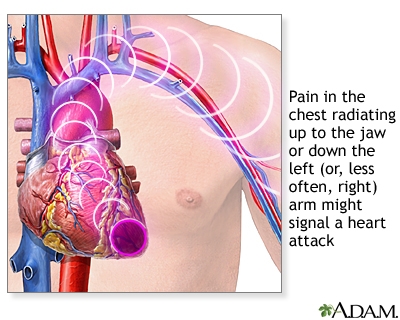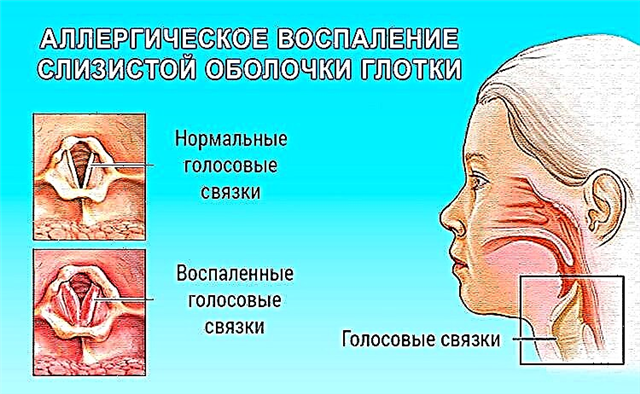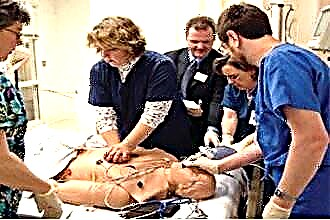What is the degree of arterial hypertension and why is it important to determine it?
 Blood pressure is considered a very dynamic indicator; even in a healthy person, it can be within a fairly wide range. So, the systolic (upper) is normally 100-129 mm Hg. Art., diastolic (lower) from 60 to 85.
Blood pressure is considered a very dynamic indicator; even in a healthy person, it can be within a fairly wide range. So, the systolic (upper) is normally 100-129 mm Hg. Art., diastolic (lower) from 60 to 85.
The same will happen in the presence of a disease - hypertension. A person has a large margin of safety in this regard - some survive at rates above 200 mm Hg. Art. However, changes in the arteries often begin even with minor fluctuations from the norm - in the range of 10-15 mm Hg. In addition, depending on the magnitude of blood pressure, various disorders occur in the activity of the so-called target organs - the kidneys, retina, and the brain. It is these structures that suffer most from hypoxia. All this requires a differentiated approach in the diagnosis and treatment of this pathology.
So, the degree of arterial hypertension is a range of indicators at which there are (or not) certain pathological changes in target organs. Such a gradation allows you to determine different risk probabilities for certain categories, which is also of no small importance in the treatment of a patient.
How to determine the degree of hypertension?
Before setting the actual level of hypertension severity, it is necessary to correctly measure the pressure, because the result depends on this. There are the following rules for determining the value of blood pressure:
- the pressure is measured on each hand, the one that is larger is chosen;
- on each hand, measurements are made three times, at short intervals, choosing the middle parameter.
To determine a specific degree, use the following table:
| Hypertension degree | Systolic blood pressure (mm Hg) | Diastolic blood pressure (mmHg) |
|---|---|---|
| Normal pressure | <130 | <85 |
| High normal pressure | 130-140 | 85-90 |
| The first | 140-160 | 90-100 |
| The second | 160-180 | 100-109 |
| The third | >180 | >110 |
In the medical literature, isolated hypertension is also sometimes distinguished, in which the systolic blood pressure is above 140, and the diastolic is below 90.
 High normal pressure also called prehypertension. This stage does not yet indicate the presence of the disease, however, the risk of this is very high and it is already necessary to take care of your health, taking preventive measures.
High normal pressure also called prehypertension. This stage does not yet indicate the presence of the disease, however, the risk of this is very high and it is already necessary to take care of your health, taking preventive measures.
First degree is considered a mild and early form of the disease, in which there are no damage to target organs and symptoms of high blood pressure. In such a case, the patient is not bothered by hypertensive crises. Pathology can be detected only with instrumental pressure measurement.
At second degree (moderate) Hypertension, some symptoms of the disease are already observed, occasionally exacerbations develop, with a detailed study, at least one lesion of the target organ is found:
- hypertrophy of the heart muscle of the left ventricle;
- impaired renal function (proteinuria, hypercreatininemia);
- retinopathy (retinal vascular sclerosis);
- atherosclerosis.
Third degree (severe) characterized by clear symptoms, damage to several target organs, serious complications up to the development of renal, heart or pulmonary failure, strokes, encephalopathy. Exacerbations of the disease are often observed. The changes arising in the vessels become irreversible: the 3rd degree is no longer able to go into the first.
How does the patient's treatment regimen depend on the degree of arterial hypertension?
 Different degrees of development of arterial hypertension have an unequal effect on the body, and therefore require a differentiated approach to therapy, depending on the stage of the disease.
Different degrees of development of arterial hypertension have an unequal effect on the body, and therefore require a differentiated approach to therapy, depending on the stage of the disease.
High normal pressure - despite the fact that the stage is not yet considered a pathology, already at this stage one should think about the future, because the persistence of current trends can aggravate the patient's condition. In this case, a lifestyle modification is recommended, namely:
- correction of nutrition - it is necessary to reduce the amount of fats and carbohydrates, table salt, sugar, increase the consumption of fruits and vegetables. Also, in order to control weight, you should adhere to a hypocaloric diet;
- walk more in the fresh air and engage in exercise therapy complexes or breathing exercises;
- physical therapy such as massage or water treatments will be helpful
- stop smoking and drinking alcohol.
I degree - for young patients in the absence of concomitant pathologies and other risk factors (such as a burdened family history), it is enough to correct the lifestyle. However, in older people, such indicators can already be considered the basis for pharmacotherapy. In this case, only one drug is prescribed from any of the following group:
- angiotensin-converting enzyme (ACE) inhibitors - Enalapril, Ramipril, Captopril;
- angiotensin receptor blockers - Losartan, Candesar, Edarbi;
- beta-blockers (prescribed as an alternative to pregnant women or in case of intolerance to ACE inhibitors) - Metoprolol, Nebivalol, Talinolol;
- older patients are more often recommended calcium channel blockers - Nifedipine, Verapamil, Cinnarizine.
 II degree - with this type of hypertension, the task of drug therapy is to control pressure in order to reduce the manifestations of the disease, prevent hypertensive crises and prevent progression to grade 3. The following algorithms are used:
II degree - with this type of hypertension, the task of drug therapy is to control pressure in order to reduce the manifestations of the disease, prevent hypertensive crises and prevent progression to grade 3. The following algorithms are used:
- an ACE inhibitor or angiotensin receptor blocker together with a calcium antagonist;
- in case of intolerance to calcium antagonists or in the presence of heart failure, a combination of an ACE inhibitor or angiotensin blocker with a diuretic from the thiazide group (chlorthalidone, clopamide) is indicated
- if the patient is already taking a beta-blocker, a calcium channel inhibitor is added to it.
III degree - this stage is accompanied by significant disorders of many organs and can lead to serious complications such as cerebrovascular accident or an acute coronary symptom. The following schemes are used in the treatment:
- an ACE inhibitor or BAR together with calcium inhibitors and a thiazide diuretic;
- if diuretics are poorly tolerated, they are replaced by adrenergic blockers.
Influence of the degree of hypertension on the patient's prognosis and the success of his further treatment?
There is a very well-traced relationship between mortality from cardiovascular pathologies and the degree of hypertension. So, it is known that with each increase in the SBP level by 20 mm Hg. Art., and DBP by 10 mm Hg. from normal, the risk of death doubles.
More accurate information on the level of cardiovascular risk can be obtained from the following table:
| Anamnesis | Degrees of hypertension | ||
|---|---|---|---|
| The first | The second | The third | |
| No predisposing factors, target organ pathologies and associated diseases | Short | Average | High |
| 1-2 risk factors, no associated diseases | Average | Average | Extremely high |
| 3 or more factors, or diabetes or pathology of target organs | High | High | Extremely high |
| There are comorbidities, there may be predisposing factors or target organ abnormalities | Extremely high | Extremely high | Extremely high |
Decoding:
- low level - the probability of myocardial infarction or cerebrovascular accident is less than 15%;
- medium - 15-20%;
- high - 20-30%;
- extremely high -> 30%
As for the features of treatment, the 1st and 2nd degrees are reversible, while in the case of the 3rd, only a slowdown of the pathological process is possible, for the most part it leads to disability.
Conclusions
Classification of arterial hypertension by degrees is a very simple and convenient tool in the diagnosis and treatment of this disease. This makes it possible to differentiate algorithms in therapy and to establish the exact probability of complications and mortality for each individual patient, which is very important in the individual approach of modern medicine.
Knowledge of the exact phase of hypertension suggests the presence of complications from other systems and facilitates the diagnostic search for a doctor, which is also considered a significant advantage of this classification.



